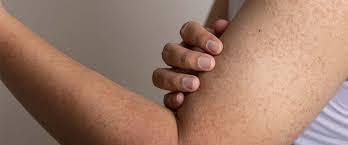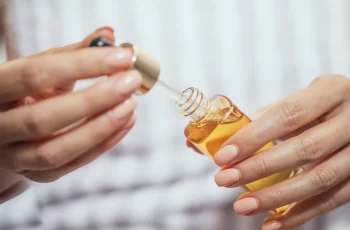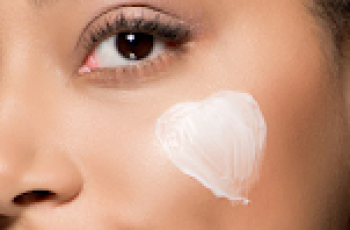
Is Salicylic Acid Good for Keratosis Pilaris?
Have you ever found the skin around your arms, cheeks, or thighs often have a bumpy texture? Ever wondered what it was, and why you are suffering from it? Chances are its keratosis pilaris, also known as chicken skin, and it’s a common concern for many of us. With that in mind, we have taken it upon ourselves to find out more about this genetic condition and figuring out whether salicylic acid is good for keratosis pilaris.
Before we dive in, if you wanted to find out more about salicylic acid, check out our blog post. For those who only need a quick reminder, here are examples of what salicylic acid can do for the skin.
What is salicylic acid and how does it benefit the skin?
Salicylic acid is a popular blemish fighting ingredient that belongs to the beta hydroxy acid (BHA) family. It can provide a number of benefits, especially for those who are prone to frequent breakouts.
Salicylic acid is oil soluble meaning it can penetrate further down into the skin than other acids, such as the popular AHA, glycolic acid. It can clear the pores of excess sebum, dirt, bacteria, and other impurities.
Salicylic acid can slough away the build-up of dead skin cells that can sit on the surface of the skin and form spots, and blackheads as well as making the complexion look dull and lack lustre.
Salicylic acid removes the barrier of impurities that sit on the skin surface enabling other skincare formulas to absorb rapidly.
What is keratosis pilaris?
Keratosis pilaris is a common skin condition that appears on the skin when there is a build-up of keratin, which is hard protein that is harmless, but can be unsightly. This results in the pores becoming clogged and results in rough patches of skin, with small bumps under the skin. The texture and look of the skin will resemble what many suffers call chicken skin and will often flare-up throughout the year, particularly in the winter months.
There is no real treatment or understanding of how and why people suffer from keratosis pilaris, but there are some skincare ingredients used to help reduce the severity of any flare-ups.
Which acid is best for keratosis pilaris?
There are a variety of acids available to help combat keratosis pilaris, the most used are members of the AHA and BHA family as they provide chemical exfoliation. These acids are found in such products as toners, face cleansers, and serums, all of which are found in over-the-counter formulas. If you are wanting something to pack more of a punch, consult with a trained professional for effective treatments or medical grade products to introduce into your everyday routine.
The best acids to use on keratosis pilaris are,
Lactic Acid
Known as being the gentlest of the AHAs, this is because its molecular size is too large to penetrate too far and cause irritation. It also contains humectant traits that enable the acid to exfoliate whilst locking moisture into the skin barrier. This not only revives the luminosity of the complexion but also strengthens the skin ensuring it is able to protect itself from exposure to free radicals, such as UV light, pollution, and other environmental aggressors.
Salicylic Acid
Used by many who have an oily skin type and who are prone to breakouts, salicylic acid is more potent than lactic acid. This is a result of it being oil-soluble meaning it can reach further down than lactic acid and clear the pores of bacteria, debris, and gunk clogging the pores. For those with a sensitive skin type, I would suggest avoiding salicylic acid as it’s too potent and will result in irritation.
Glycolic Acid
Derived from sugar cane, glycolic acid is one of the most popular AHAs and sits in the middle of lactic acid and salicylic acid regarding how potent it is on the skin. Its molecular size is smaller than lactic acid, but not as small as salicylic acid, this results in it being an effective ingredient to use if you have a normal skin type. You will also find you can use glycolic acid twice a day, especially if it’s formulated into skincare products that are rinsed off the skin.
Is glycolic acid or salicylic acid better for keratosis pilaris?
Both acids are effective at clearing the skin of keratosis pilaris. It really boils down to how your skin reacts to the acids which will determine your choice. As I have mentioned already, salicylic acid is a lot more potent than glycolic acid and can cause irritation. This is the main concern regarding using these actives on the face and not body. The skin on our body is slightly more robust so to establish which acid to use, it’s best to perform a patch test for 24 hours before applying it all over the skin. Do this by applying a 10p size amount of product on the inside of your forearm and leave the product there for 24 hours, if there’s no sign of irritation, you are good to go. Don’t hesitate to consult with a doctor or dermatologist if you have any concerns.
What gets rid of keratosis pilaris?
There are a few ways of treating keratosis pilaris at home, here are some examples of proven ways to treat KP easily and effectively.
Start off by gently exfoliating the skin whilst bathing. By this I mean using a loofah, or flannel to loosen the bounds of the dead skin cells making them easier to slough away with the following steps of this routine.
Follow your gentle exfoliation by applying a chemical exfoliator that can be applied directly to the skin after bathing. The best exfoliants to use are glycolic acid, salicylic acid, and lactic acid. You will also find that any body lotions containing urea will also work at removing the build-up of dead skin cells.
Finally, finish this off with a moisturiser packed with hyaluronic acid, or other hydrating ingredients to keep the skin nourished. You should opt for formulas that are oil-free to prevent the hair follicles from becoming blocked again.
That is an example of the easiest way of maintaining your skin, as for curing keratosis pilaris, there is sadly not known treatment that will rid you of the condition completely. But this routine will help you keep on top of any flare-ups.
What should I avoid with keratosis pilaris?
There is a lot of information surrounding ways of reducing the build-up of keratin in the skin by changing your diet. Those who eliminated gluten from their daily diet have found a significant reduction in how badly they suffer from flare-ups in KP. Others also suggest avoiding spices, oils, and lactose has also improved their concerns. This however does lack scientific backing so if this is something you wanted to pursue, I suggest consulting with your doctor.
How long does it take to get rid of keratosis pilaris?
The average time it takes for keratosis pilaris to clear fully is 4 to 6 weeks. This is after consistent use of the best product formulation and can often take some time to find the right skincare product in the first place.
If you are wanting to rid the skin of keratosis pilaris, you need to maintain your routine to ensure you keep any flare-ups to a bare minimum.
There you have a little more information about whether salicylic acid is good for treating keratosis pilaris. With any luck, I hope I have cleared up some confusion surrounding this skin concern, but if you have any further questions, come, and follow us on Instagram!


